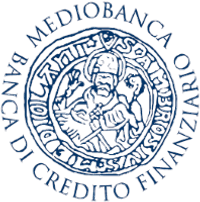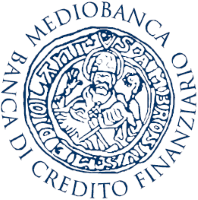
Mediobanca Banca di Credito Finanziario SpA
MIL:MB


| US |

|
Johnson & Johnson
NYSE:JNJ
|
Pharmaceuticals
|
| US |

|
Berkshire Hathaway Inc
NYSE:BRK.A
|
Financial Services
|
| US |

|
Bank of America Corp
NYSE:BAC
|
Banking
|
| US |

|
Mastercard Inc
NYSE:MA
|
Technology
|
| US |

|
UnitedHealth Group Inc
NYSE:UNH
|
Health Care
|
| US |

|
Exxon Mobil Corp
NYSE:XOM
|
Energy
|
| US |

|
Pfizer Inc
NYSE:PFE
|
Pharmaceuticals
|
| US |

|
Palantir Technologies Inc
NYSE:PLTR
|
Technology
|
| US |

|
Nike Inc
NYSE:NKE
|
Textiles, Apparel & Luxury Goods
|
| US |

|
Visa Inc
NYSE:V
|
Technology
|
| CN |

|
Alibaba Group Holding Ltd
NYSE:BABA
|
Retail
|
| US |

|
JPMorgan Chase & Co
NYSE:JPM
|
Banking
|
| US |

|
Coca-Cola Co
NYSE:KO
|
Beverages
|
| US |

|
Walmart Inc
NYSE:WMT
|
Retail
|
| US |

|
Verizon Communications Inc
NYSE:VZ
|
Telecommunication
|
| US |

|
Chevron Corp
NYSE:CVX
|
Energy
|
Utilize notes to systematically review your investment decisions. By reflecting on past outcomes, you can discern effective strategies and identify those that underperformed. This continuous feedback loop enables you to adapt and refine your approach, optimizing for future success.
Each note serves as a learning point, offering insights into your decision-making processes. Over time, you'll accumulate a personalized database of knowledge, enhancing your ability to make informed decisions quickly and effectively.
With a comprehensive record of your investment history at your fingertips, you can compare current opportunities against past experiences. This not only bolsters your confidence but also ensures that each decision is grounded in a well-documented rationale.
Do you really want to delete this note?
This action cannot be undone.

| 52 Week Range |
13.76
22.01
|
| Price Target |
|
We'll email you a reminder when the closing price reaches EUR.
Choose the stock you wish to monitor with a price alert.

|
Johnson & Johnson
NYSE:JNJ
|
US |

|
Berkshire Hathaway Inc
NYSE:BRK.A
|
US |

|
Bank of America Corp
NYSE:BAC
|
US |

|
Mastercard Inc
NYSE:MA
|
US |

|
UnitedHealth Group Inc
NYSE:UNH
|
US |

|
Exxon Mobil Corp
NYSE:XOM
|
US |

|
Pfizer Inc
NYSE:PFE
|
US |

|
Palantir Technologies Inc
NYSE:PLTR
|
US |

|
Nike Inc
NYSE:NKE
|
US |

|
Visa Inc
NYSE:V
|
US |

|
Alibaba Group Holding Ltd
NYSE:BABA
|
CN |

|
JPMorgan Chase & Co
NYSE:JPM
|
US |

|
Coca-Cola Co
NYSE:KO
|
US |

|
Walmart Inc
NYSE:WMT
|
US |

|
Verizon Communications Inc
NYSE:VZ
|
US |

|
Chevron Corp
NYSE:CVX
|
US |
This alert will be permanently deleted.
Mediobanca Banca di Credito Finanziario SpA
Mediobanca Banca di Credito Finanziario SpA, nestled in the heart of Italy’s financial district, has long been a stalwart of the European banking landscape. Established in 1946, initially to provide supportive financial services to businesses and reconstruct post-war Italy, the institution has morphed into a diverse financial powerhouse. Over the decades, Mediobanca has meticulously diversified its operations, distinguishing itself with a focus on corporate investment banking, specialized lending, and wealth management. Its corporate investment banking segment drives a significant portion of its revenue, offering services such as mergers and acquisitions advisory, capital markets, and structured finance solutions. Mediobanca has adroitly positioned itself within the Italian economy, leveraging its in-depth market insights and strong client relationships to facilitate substantial financial transactions, which forms the backbone of its service-oriented income.
In its persistent quest for growth, Mediobanca has also expanded its retail operations through its consumer credit division, Compass, which plays a pivotal role in its earnings composition. By providing consumer loans, credit cards, and other retail financing options, Compass taps into the everyday financial needs of individuals, generating a steady stream of revenue. Moreover, Mediobanca's strategic foray into asset management, through stakes in numerous companies and partnerships, allows it to diversify income beyond interest margins. These carefully crafted business strategies not only help Mediobanca mitigate risk by balancing interest and non-interest income but also ensure it remains agile in the face of economic shifts. In essence, Mediobanca’s income generation is a complex tapestry woven through a blend of high finance and retail services, where tradition and innovation collectively sustain its legacy and future growth.

Mediobanca Banca di Credito Finanziario SpA, nestled in the heart of Italy’s financial district, has long been a stalwart of the European banking landscape. Established in 1946, initially to provide supportive financial services to businesses and reconstruct post-war Italy, the institution has morphed into a diverse financial powerhouse. Over the decades, Mediobanca has meticulously diversified its operations, distinguishing itself with a focus on corporate investment banking, specialized lending, and wealth management. Its corporate investment banking segment drives a significant portion of its revenue, offering services such as mergers and acquisitions advisory, capital markets, and structured finance solutions. Mediobanca has adroitly positioned itself within the Italian economy, leveraging its in-depth market insights and strong client relationships to facilitate substantial financial transactions, which forms the backbone of its service-oriented income.
In its persistent quest for growth, Mediobanca has also expanded its retail operations through its consumer credit division, Compass, which plays a pivotal role in its earnings composition. By providing consumer loans, credit cards, and other retail financing options, Compass taps into the everyday financial needs of individuals, generating a steady stream of revenue. Moreover, Mediobanca's strategic foray into asset management, through stakes in numerous companies and partnerships, allows it to diversify income beyond interest margins. These carefully crafted business strategies not only help Mediobanca mitigate risk by balancing interest and non-interest income but also ensure it remains agile in the face of economic shifts. In essence, Mediobanca’s income generation is a complex tapestry woven through a blend of high finance and retail services, where tradition and innovation collectively sustain its legacy and future growth.
Revenue Growth: Mediobanca reported revenue up 5% for the first nine months, with strong fee income and steady growth across key businesses.
Profitability: Profit and ROTE remained robust at 14%, with high profitability sustained across divisions.
Wealth Management Momentum: Net new money of EUR 7 billion, up 42% year-on-year, with significant managed asset growth and rising management fees.
Consumer Finance Records: New loan production hit a record EUR 6.7 billion, up 9%, driving solid NII growth.
CIB Recovery: Corporate lending rebounded with EUR 1 billion in new loans, up 8% YoY; CIB revenues up 26%.
Cost of Risk (CoR): CoR improved to 39 bps this quarter, with positive trends and write-backs supporting results.
Banca Generali Deal: Management strongly reiterated the strategic and financial benefits of the proposed Banca Generali acquisition, projecting a future ROTE of 20%.
Guidance Confirmed: Management confirmed full-year guidance, including EPS and net new money targets.

































